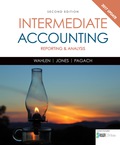
Concept explainers
Calculate the cost of ending inventory for 2015, 2016, 2017, and 2018 years by using dollar-value LIFO retail method.
Explanation of Solution
Dollar-Value-LIFO: This method shows all the inventory figures at dollar price rather than units. Under this inventory method, the units that are purchased last are sold first. Thus, it starts from the selling of the units recently purchased and ending with the beginning inventory.
Calculate the cost of ending inventory for 2015, 2016, 2017, and 2018 years by using dollar-value LIFO retail method:
For the year 2015:
Step 1: Calculate the amount of estimated ending inventory at retail.
| I Incorporation | ||
| Ending Inventory Under DVL Retail Method | ||
| For the Year 2015 | ||
| Details | Cost ($) | Retail ($) |
| Beginning inventory | 40,000 | 80,000 |
| Add: Net purchase | 85,500 | 190,000 |
| Goods available for sale – Excluding beginning inventory | 85,500 | 190,000 |
| Goods available for sale – Including beginning inventory | 125,500 | 270,000 |
| Less: Net sales | (200,000) | |
| Estimated ending inventory at retail for 2015 | $70,000 | |
Table (1)
Step 2: Calculate ending inventory at retail at base-year prices.
Step 3: Calculate inventory change at retail at base year prices.
Step 4: Calculate the change at retail at relevant current costs.
Step 5: Calculate the change at relevant current costs.
Step 6: Calculate ending inventory at cost.
Hence, the ending inventory at cost for 2018 is $33,333.
Working note 1:
Calculate cost-to-retail ratio.
Working note 2:
Calculate cost-to-retail ratio.
For the year 2016:
Step 1: Calculate the amount of estimated ending inventory at retail.
| I Incorporation | ||
| Ending Inventory Under DVL Retail Method | ||
| For the Year 2016 | ||
| Details | Cost ($) | Retail ($) |
| Beginning inventory | 33,333 | 70,000 |
| Add: Net purchase | 92,000 | 230,000 |
| Goods available for sale – Excluding beginning inventory | 92,000 | 230,000 |
| Goods available for sale – Including beginning inventory | 125,333 | 300,000 |
| Less: Net sales | (210,000) | |
| Estimated ending inventory at retail for 2016 | $90,000 | |
Table (1)
Step 2: Calculate ending inventory at retail at base-year prices.
Step 3: Calculate inventory change at retail at base year prices.
Step 4: Calculate the change at retail at relevant current costs.
Step 5: Calculate the change at relevant current costs.
Step 6: Calculate ending inventory at cost.
Hence, the ending inventory at cost for 2016 is $39,999.
Working note 1:
Calculate cost-to-retail ratio.
For the year 2017:
Step 1: Calculate the amount of estimated ending inventory at retail.
| I Incorporation | ||
| Ending Inventory Under DVL Retail Method | ||
| For the Year 2017 | ||
| Details | Cost ($) | Retail ($) |
| Beginning inventory | 39,999 | 90,000 |
| Add: Net purchase | 117,600 | 280,000 |
| Goods available for sale – Excluding beginning inventory | 117,600 | 280,000 |
| Goods available for sale – Including beginning inventory | 157,599 | 370,000 |
| Less: Net sales | (260,000) | |
| Estimated ending inventory at retail for 2017 | $110,000 | |
Table (3)
Step 2: Calculate ending inventory at retail at base-year prices.
Step 3: Calculate inventory change at retail at base year prices.
Step 4: Calculate the change at retail at relevant current costs.
Step 5: Calculate the change at relevant current costs.
Step 6: Calculate ending inventory at cost.
Hence, the ending inventory at cost for 2017 is$44,963.
Working note 1:
Calculate cost-to-retail ratio.
For the year 2018:
Step 1: Calculate the amount of estimated ending inventory at retail.
| I Incorporation | ||
| Ending Inventory Under DVL Retail Method | ||
| For the Year 2018 | ||
| Details | Cost ($) | Retail ($) |
| Beginning inventory | 44,963 | 110,000 |
| Add: Net purchase | 147,200 | 320,000 |
| Goods available for sale – Excluding beginning inventory | 147,200 | 320,000 |
| Goods available for sale – Including beginning inventory | 192,163 | 430,000 |
| Less: Net sales | (300,000) | |
| Estimated ending inventory at retail for 2018 | $130,000 | |
Table (4)
Step 2: Calculate ending inventory at retail at base-year prices.
Step 3: Calculate inventory change at retail at base year prices.
Step 4: Calculate the change at retail at relevant current costs.
Step 5: Calculate the change at relevant current costs.
Step 6: Calculate ending inventory at cost.
Hence, the ending inventory at cost for 2018 is$52,054.
Working note 1:
Calculate cost-to-retail ratio.
Want to see more full solutions like this?
Chapter 8 Solutions
EBK INTERMEDIATE ACCOUNTING: REPORTING
- Please provide the accurate answer to this financial accounting problem using appropriate methods.arrow_forwardI am searching for the accurate solution to this general accounting problem with the right approach.arrow_forwardCan you help me solve this general accounting question using the correct accounting procedures?arrow_forward
- Can you help me solve this general accounting question using the correct accounting procedures?arrow_forwardI need help solving this general accounting question with the proper methodology.arrow_forwardI need the correct answer to this general accounting problem using the standard accounting approach.arrow_forward
 Individual Income TaxesAccountingISBN:9780357109731Author:HoffmanPublisher:CENGAGE LEARNING - CONSIGNMENT
Individual Income TaxesAccountingISBN:9780357109731Author:HoffmanPublisher:CENGAGE LEARNING - CONSIGNMENT Financial AccountingAccountingISBN:9781337272124Author:Carl Warren, James M. Reeve, Jonathan DuchacPublisher:Cengage Learning
Financial AccountingAccountingISBN:9781337272124Author:Carl Warren, James M. Reeve, Jonathan DuchacPublisher:Cengage Learning Intermediate Accounting: Reporting And AnalysisAccountingISBN:9781337788281Author:James M. Wahlen, Jefferson P. Jones, Donald PagachPublisher:Cengage Learning
Intermediate Accounting: Reporting And AnalysisAccountingISBN:9781337788281Author:James M. Wahlen, Jefferson P. Jones, Donald PagachPublisher:Cengage Learning Financial AccountingAccountingISBN:9781305088436Author:Carl Warren, Jim Reeve, Jonathan DuchacPublisher:Cengage Learning
Financial AccountingAccountingISBN:9781305088436Author:Carl Warren, Jim Reeve, Jonathan DuchacPublisher:Cengage Learning Cornerstones of Financial AccountingAccountingISBN:9781337690881Author:Jay Rich, Jeff JonesPublisher:Cengage Learning
Cornerstones of Financial AccountingAccountingISBN:9781337690881Author:Jay Rich, Jeff JonesPublisher:Cengage Learning





